Yılanlı
yalı [mansion with snakes] – Abstract from the book by Cahit
Kayra, Bebek, Mekanlar ve zamanlar [Abodes and times] – Akbank
– Istanbul 1993
During the days of Mahmut II one sees the high officials settling along the shore between Akıntıburnu and Rumelihisarı. One of Mahmut II’s advisers, Hekimbaşı (the Sultan’s chief physician) Behçet Efendi; the Durrizade family that provided the Ottomans with Sheikhulislams [religious heads] for centuries; the family of the Minister for Foreign Affairs Sekip Pasha; the Sultan’s beloved gentleman in waiting Said Efendi and many more spent cool summers and sweet spring times in the residences on these shores. One of the mansions standing up to the present day is the Yılanlı yalı actually built in the18th century, and situated at the northern end of the bay of Bebek, half way to Rumeli Hissar. Its residents were a variety of Ottoman palace officials. One day when the Sultan at the time, Mahmut II, was passing it by boat, noticed this fine building and in comments expressed an interest in the yali. In fear of appropriation, the owner asks for aid for one of the courtiers (Musahip Said Efendi) who then stated to the sultan that the house was plagued with snakes, thus saving it for the owner. The name stuck.
Return to Nancy Cutcliffe’s photos.
During the days of Mahmut II one sees the high officials settling along the shore between Akıntıburnu and Rumelihisarı. One of Mahmut II’s advisers, Hekimbaşı (the Sultan’s chief physician) Behçet Efendi; the Durrizade family that provided the Ottomans with Sheikhulislams [religious heads] for centuries; the family of the Minister for Foreign Affairs Sekip Pasha; the Sultan’s beloved gentleman in waiting Said Efendi and many more spent cool summers and sweet spring times in the residences on these shores. One of the mansions standing up to the present day is the Yılanlı yalı actually built in the18th century, and situated at the northern end of the bay of Bebek, half way to Rumeli Hissar. Its residents were a variety of Ottoman palace officials. One day when the Sultan at the time, Mahmut II, was passing it by boat, noticed this fine building and in comments expressed an interest in the yali. In fear of appropriation, the owner asks for aid for one of the courtiers (Musahip Said Efendi) who then stated to the sultan that the house was plagued with snakes, thus saving it for the owner. The name stuck.
Return to Nancy Cutcliffe’s photos.
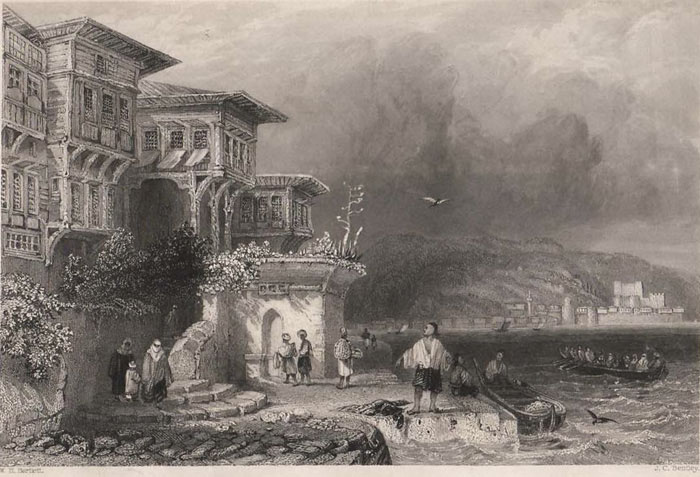 |
Yılanlı
yalı, beginning of 19th century, engraving by W. Bartlett,
with one of the towers of Anadolu Hissar (the smaller and earlier Ottoman
construction, opposite the Rumeli castle) just visible on the edge. There
seems to be some ‘artistic licence’, as the hills across seem improbably
high - other engravings
by Bartlett showing both forts, and various views along the Bosphorus, part of the series published in 1840.
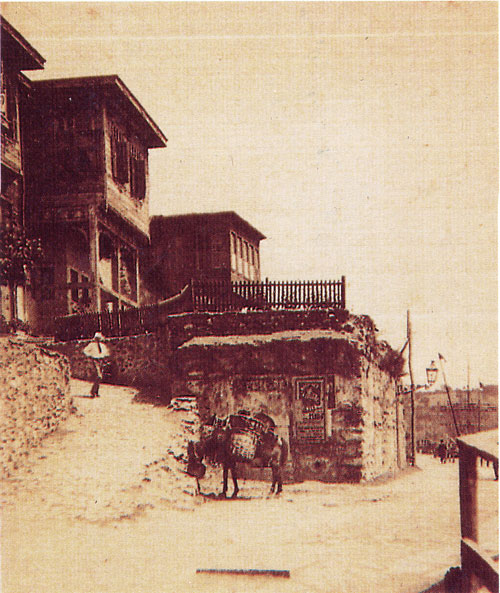 |
Photo of the
building 1917, with a travelling vegetable seller with donkey.
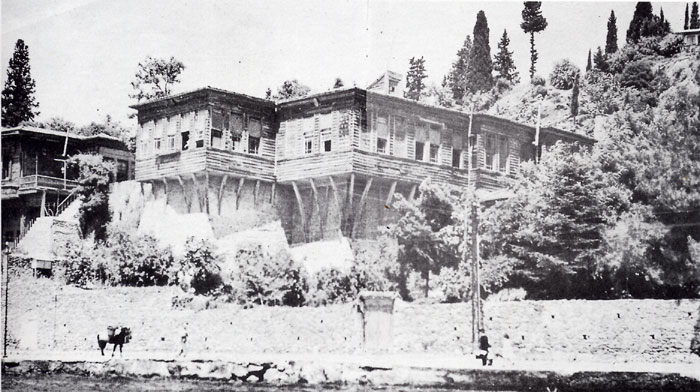 |
Similar period
showing the selamlık [male quarters] section.
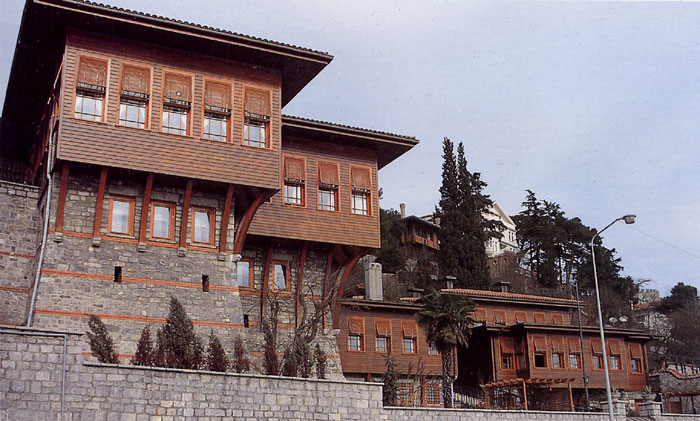 |
Post restoration
views - this photo allows the building to be positioned in respect to the
Rumeli Hissar, as the castellated top of the southern tower is just visible
beyond the white house at a slightly higher elevation on the right, thus
with the line of sight, the location of Yılanlı yalı can
be pin-pointed on the satelite photo as house directly across from
the two large ships anchored side by side, whose roof is easy to spot. Thus
this house would have certainly be within walking distance of the original
George Baker house.
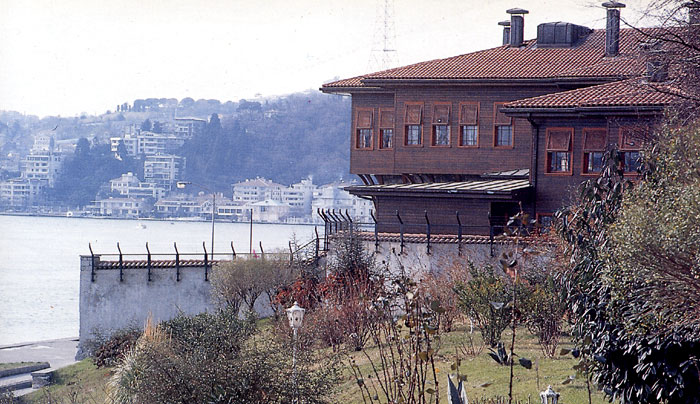 |
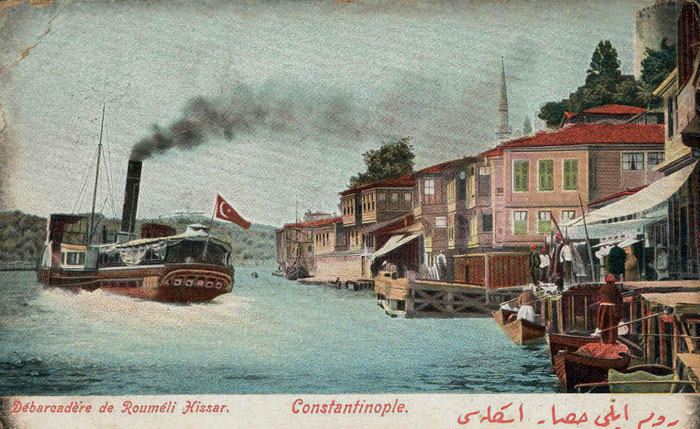 |
A postcard
view of the former Rumeli hisar ferry station, around the turn of the century.
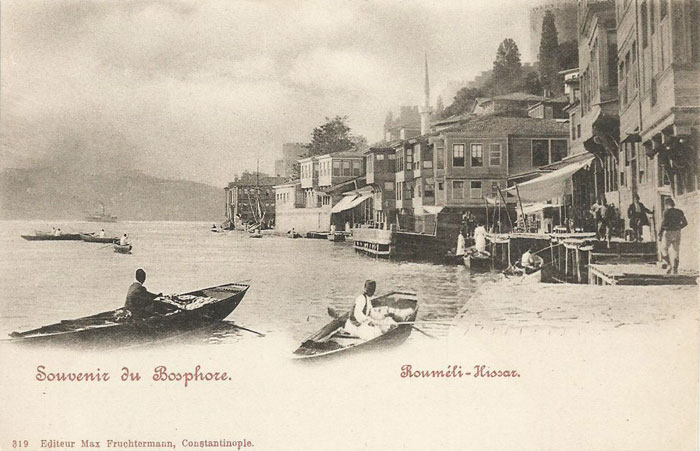 |
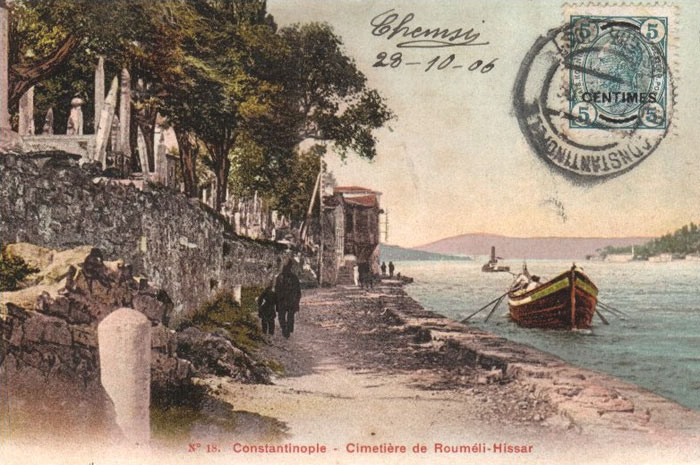 |
The steps
leading to Yılanlı yalı seem to be in the distance of this
1906 dated postcard.
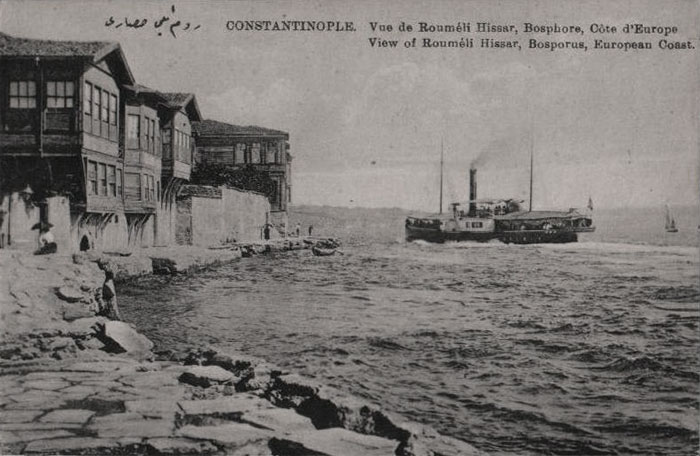 |
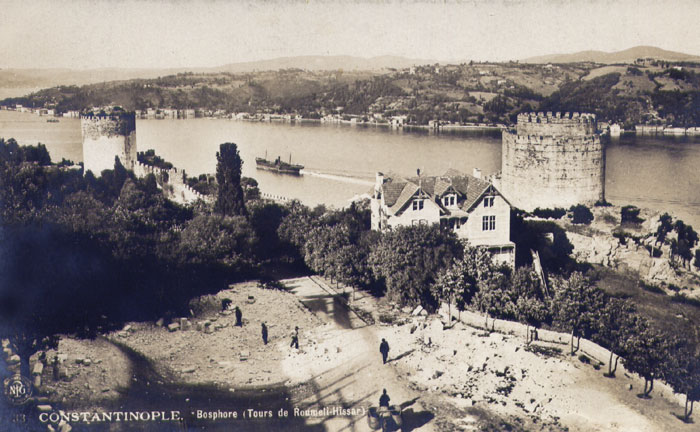 |
A postcard
view of the Roumeli Hissar, probably viewed from Robert College buildings.
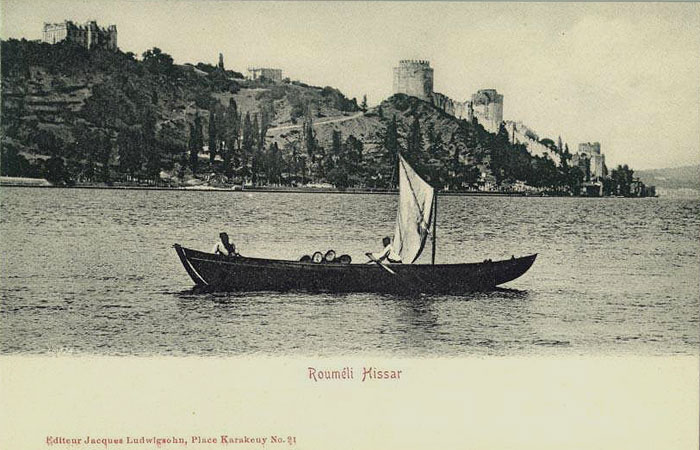 |
View from
out in the Bosphorus, with a winding road within a wooded valley, possible
site of the Baker house yet to be built?
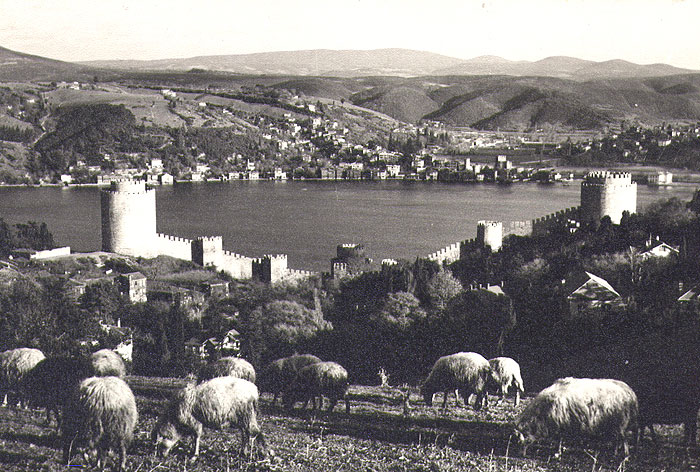 |
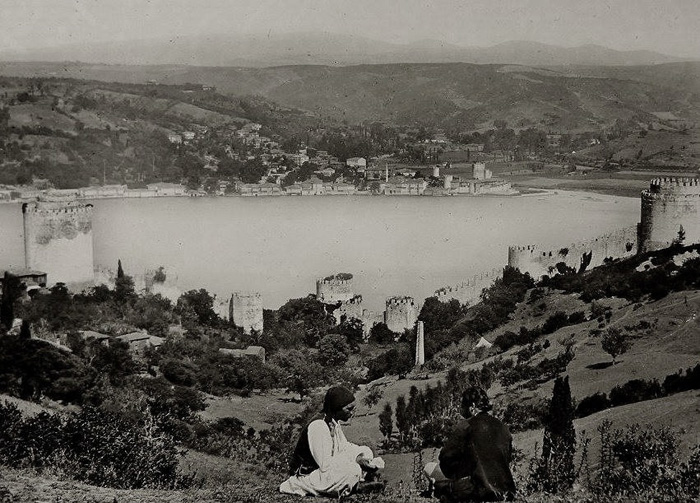 |
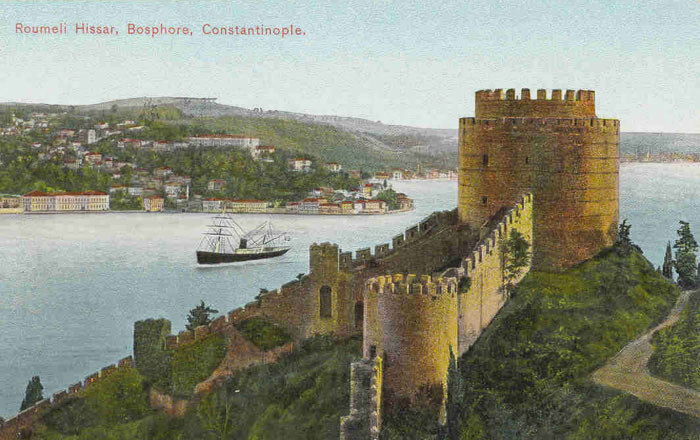 |
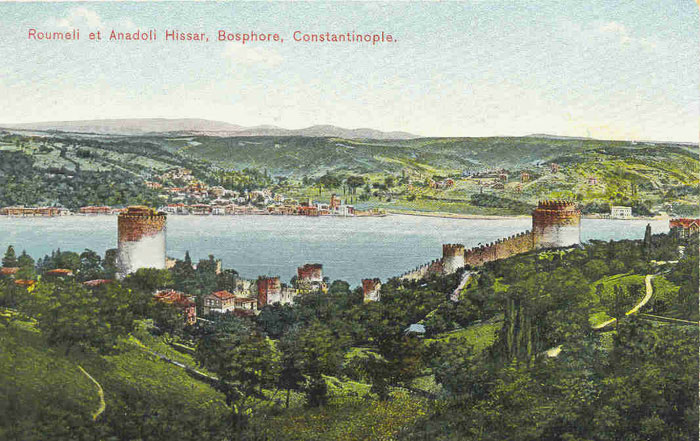 |
Colour tinted
postcards of around turn of the century showing the path of the winding
road leading to the valley in the rear of the castle.
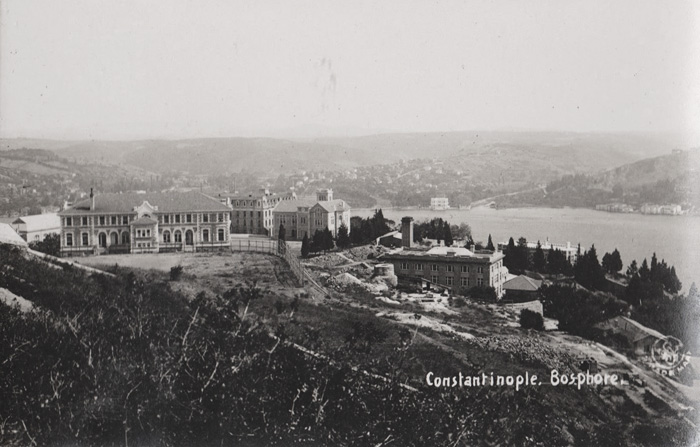 |
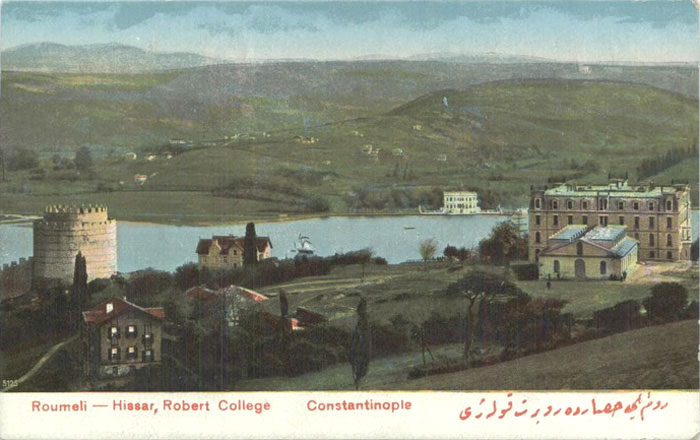 |
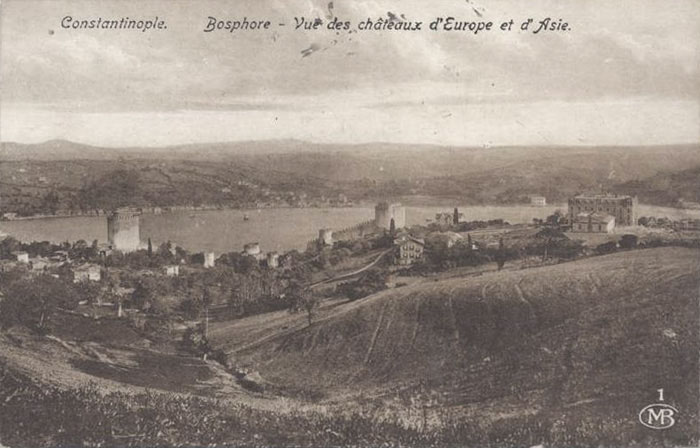 |
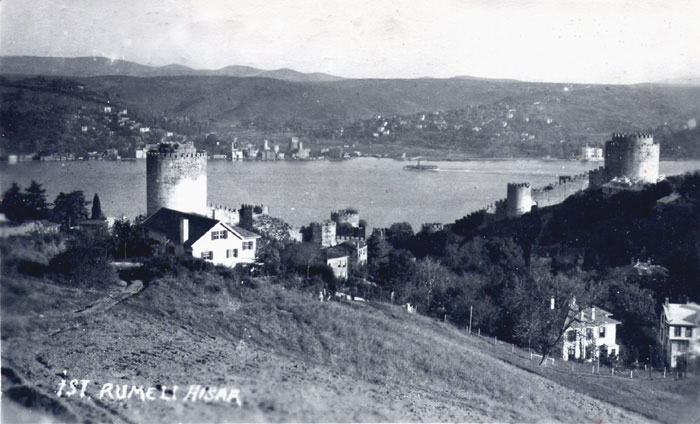 |
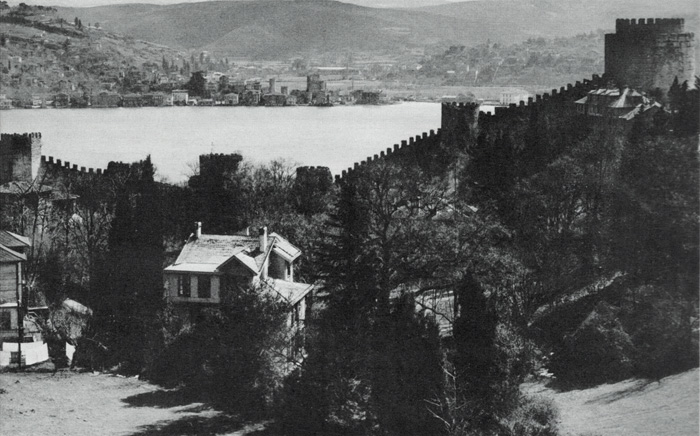 |
Possibly the George Baker house referred to as the “Cedars” was in the valley behind
the Rumeli Castle, half-hidden amongst the trees.
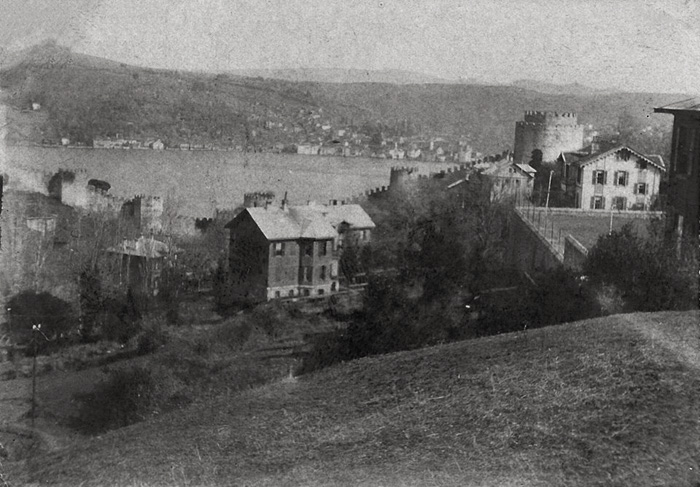 |
Scene in 1918.
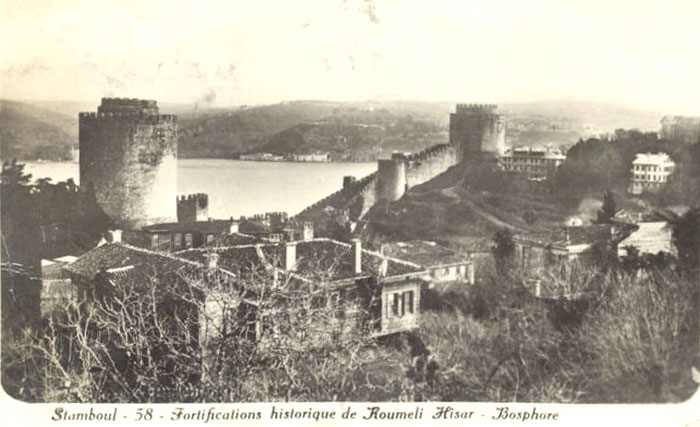 |
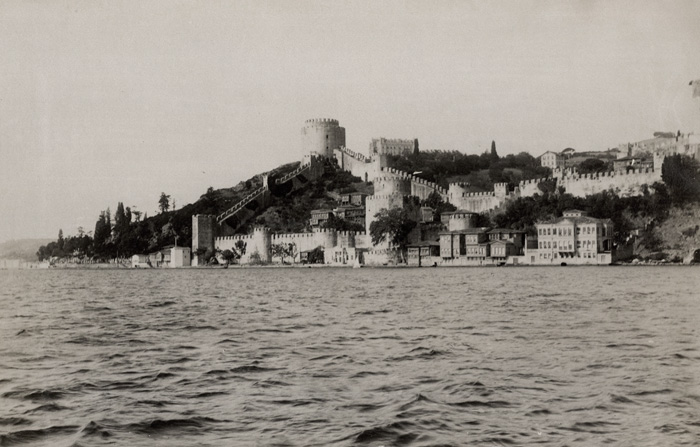 |
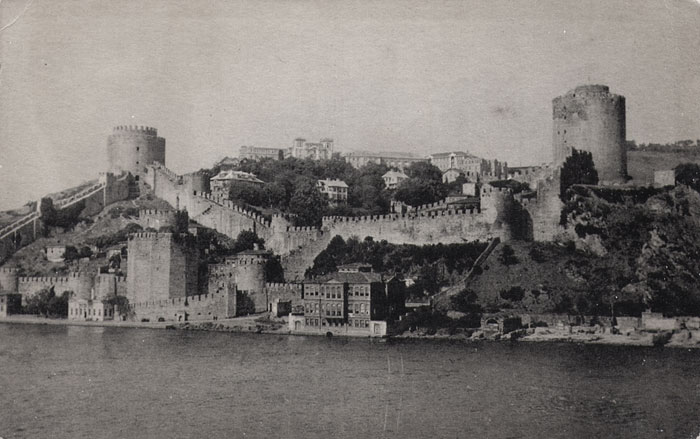 |
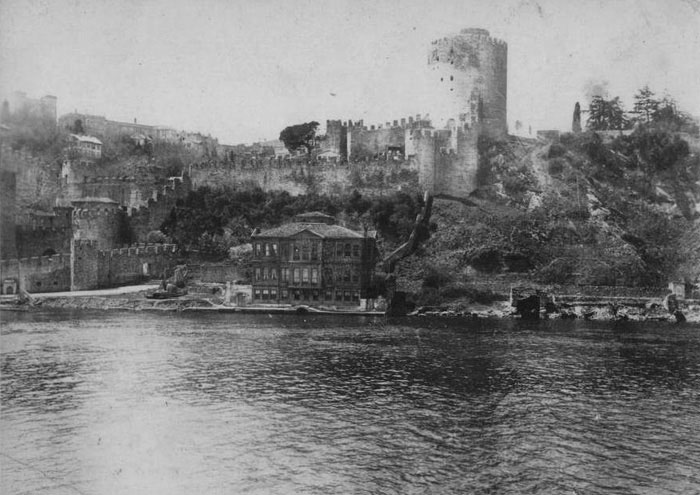 |
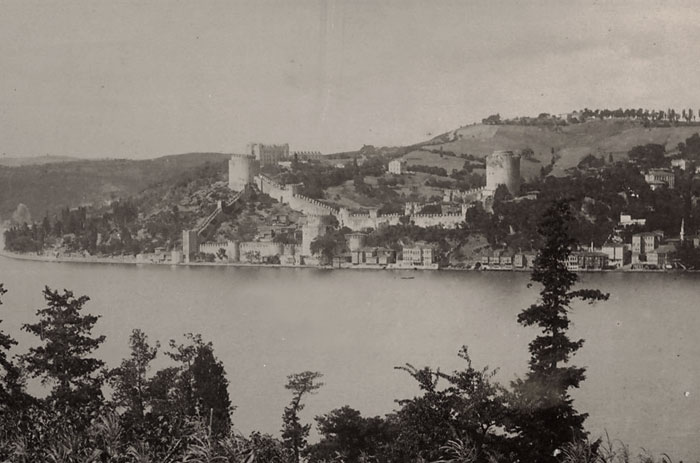 |
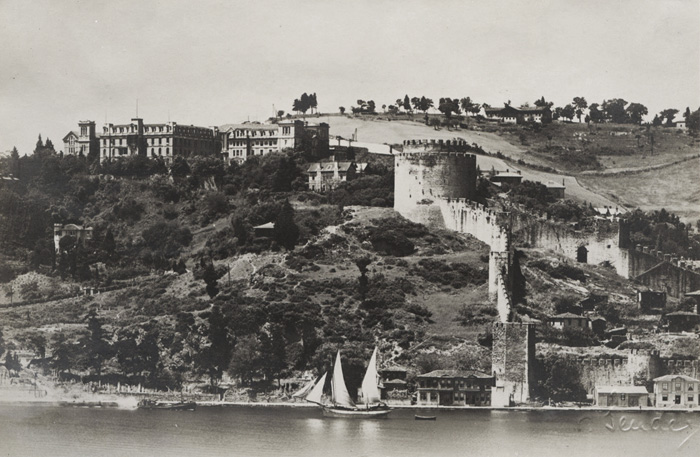 |
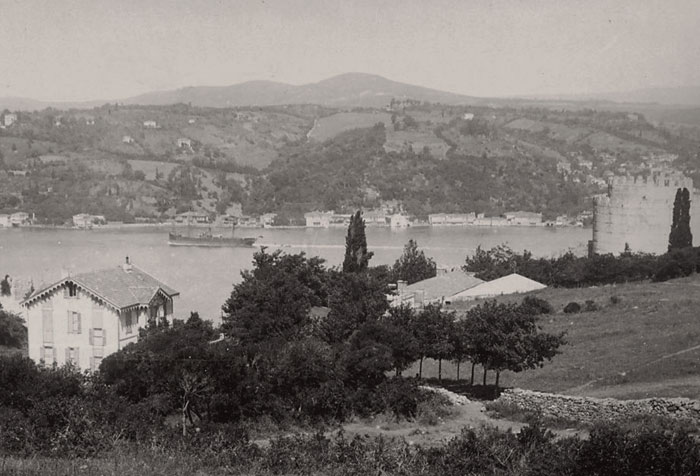 |
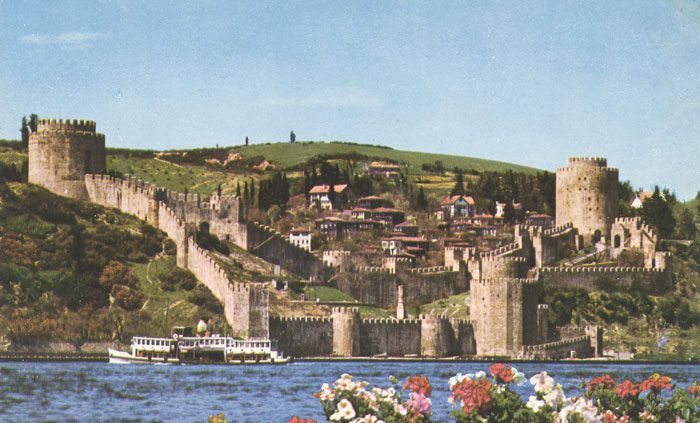 |
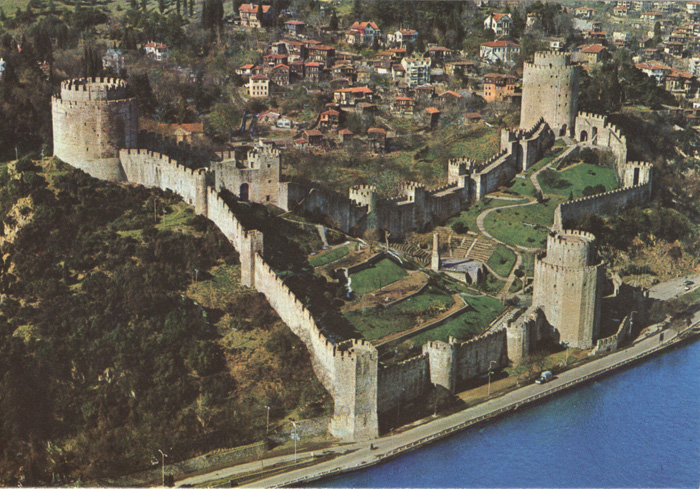 |
The location viewed from the Bosphorus in the 1970s - modern views: